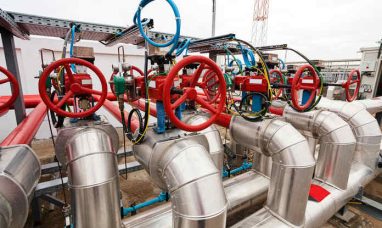NEW YORK, Jan. 21, 2025 /PRNewswire/ — Report on how AI is driving market transformation – The global automotive engine oil market size is estimated to grow by USD 12.5 billion from 2025-2029, according to Technavio. The market is estimated to grow at a CAGR of 4% during the forecast period. Growing number of vehicles in use is driving market growth, with a trend towards advances in engine oil technology. However, fluctuating crude oil prices poses a challenge. Key market players include AMSOIL Inc., BP Plc, Chevron Corp., China Petrochemical Corp., Eni SpA, Exxon Mobil Corp., FUCHS SE, GS Corp., Hinduja Group Ltd., Idemitsu Kosan Co. Ltd., MOTUL SA, Nandan Group, PETRONAS Chemicals Group Berhad, PJSC LUKOIL, Polski Koncern Naftowy ORLEN SA, Repsol SA, Shell plc, TotalEnergies SE, and Valvoline Inc..
Key insights into market evolution with AI-powered analysis. Explore trends, segmentation, and growth drivers- View Free Sample PDF
|
Automotive Engine Oil Market Scope |
|
|
Report Coverage |
Details |
|
Base year |
2024 |
|
Historic period |
2019 – 2023 |
|
Forecast period |
2025-2029 |
|
Growth momentum & CAGR |
Accelerate at a CAGR of 4% |
|
Market growth 2025-2029 |
USD 12.5 billion |
|
Market structure |
Fragmented |
|
YoY growth 2022-2023 (%) |
3.8 |
|
Regional analysis |
APAC, Europe, North America, South America, and Middle East and Africa |
|
Performing market contribution |
APAC at 49% |
|
Key countries |
China, US, Germany, Japan, France, India, UK, Brazil, UAE, and Canada |
|
Key companies profiled |
AMSOIL Inc., BP Plc, Chevron Corp., China Petrochemical Corp., Eni SpA, Exxon Mobil Corp., FUCHS SE, GS Global Corp., Hinduja Group Ltd., Idemitsu Kosan Co. Ltd., MOTUL SA, Nandan Group, PETRONAS Chemicals Group Berhad, PJSC LUKOIL, Polski Koncern Naftowy ORLEN SA, Repsol SA, Shell plc, TotalEnergies SE, and Valvoline Inc. |
Market Driver
The global automotive engine oil market is experiencing significant growth due to the adoption of advanced technologies. Vendors are investing in research and development to create superior engine oils using advanced antioxidants, surfactants, high-pressure agents, and superior corrosion inhibitors. The market is witnessing the increasing use of bonded technology, where high-pressure lubricants are formulated through the chemical treatment of hydrocarbons. These advanced lubricants offer improved resistance to high temperatures and pressure, as well as enhanced anti-corrosion properties. Vendors are also minimizing the usage of particles like graphite, molybdenum disulfide, and polytetrafluoroethylene resins to improve engine performance and emissions. These advancements in engine oil technology are anticipated to fuel the growth of the global automotive engine oil market during the forecast period.
The automotive engine oil market is witnessing significant trends in motor oil products for various types of vehicle engines. Temperature control is crucial in engine assembly, with transmission chambers requiring high-quality oil to prevent rusting and oxidation. Petroleum-based base oils and additives are key raw materials for conventional and synthetic lubes. Vehicle production is driving demand for motor oil, with electric vehicles also requiring specific types. Transmission and spark plugs benefit from high-performance engine oils. Logistics activities are essential for timely delivery of these products. Temperature management remains a challenge, especially in turbocharged engines. Synthetic engine oils, semi-synthetic, and mineral grade types cater to diverse needs. Fuel types like gasoline, ammonia, CNG, and LNG influence oil selection. Friction reduction and engine protection are primary concerns. Oil grades and additives, such as detergents, dispersants, and anti-wear agents, are essential for optimal engine performance. Crude oil prices impact the cost of base oils, making price fluctuations a significant factor. The market is expected to grow, driven by increasing vehicle production and the shift towards cleaner fuels.
Request Sample of our comprehensive report now to stay ahead in the AI-driven market evolution!
Market Challenges
- The automotive engine oil market relies on petroleum hydrocarbons derived from crude oil for production. Crude oil price volatility directly impacts engine oil pricing. In 2022, the global crude oil market experienced erratic quarterly averages, with prices ranging from USD83 to USD112.4 per barrel. These fluctuations create uncertainty for the demand of petroleum hydrocarbons in engine oil manufacturing. As a result, the automotive engine oil market growth may face challenges due to the unpredictable crude oil price trends during the forecast period.
- The automotive engine oil market faces several challenges in the raw materials sector, particularly in the sourcing of base oils and additives. Crude oil prices and availability impact base oil production, while the demand for additives like ammonia, detergents, and dispersants increases due to emissions reduction requirements. Turbochargers in engines generate more heat, necessitating high-performance engine oils that function as insulators for moving parts. Urbanization drives demand for motor oils in passenger vehicles, LCVs, and HCVs, as well as off-highway construction vehicles. OEMs prefer BSIV compliant, light-weight engine oils for gasoline and diesel engines. Alternative fuels like CNG, LNG, and e-commerce platforms influence oil change intervals and automation in oil change services. Market leaders like Castrol innovate with semi-synthetic and mineral grade types to cater to diverse engine types and fuel types. The Marcellus shale and Permian basin contribute to the base oil supply, while OEMs collaborate to develop engine-specific oils. Friction between engine parts and the need for longer oil drain intervals necessitate advanced additives and formulations. The market is witnessing the adoption of robotics and automation in oil production and distribution.
Discover how AI is revolutionizing market trends- Get your access now!
Segment Overview
This automotive engine oil market report extensively covers market segmentation by
- Application
- 1.1 Passenger vehicles
- 1.2 Commercial vehicles
- Type
- 2.1 Diesel
- 2.2 Petrol
- 2.3 Alternative fuels
- Geography
- 3.1 APAC
- 3.2 Europe
- 3.3 North America
- 3.4 South America
- 3.5 Middle East and Africa
1.1 Passenger vehicles- The global automotive engine oil market is experiencing significant growth due to the high consumption of engine oil in passenger vehicles. Passenger cars, which use passenger car motor oil (PCMO), account for a large portion of vehicles in operation. The consumption of engine oil depends on various factors, including engine type, cylinder displacement, and service intervals. Mineral-based engine oil is commonly used in gasoline, flex-fuel, and utility vehicles, while full synthetic oil is preferred for high-performance engines. Major engine oil manufacturers are investing in advanced technologies to meet evolving Corporate Average Fuel Economy (CAFE) standards. These standards apply to gasoline, diesel, and hybrid vehicles. Automotive Original Equipment Manufacturers (OEMs) are continuously improving engine performance and energy efficiency, leading to increased demand for passenger vehicles with advanced fuel injection systems, variable cylinder displacement, and hybrid powertrains. Key players in the passenger vehicle engine oil market include BP Plc, Exxon Mobil Corp, Chevron Corp., Shell Plc, and Valvoline Inc. They provide a range of engine oil grades and specifications to cater to diverse customer needs. Both conventional (mineral oil-based) and synthetic engine oil (semi and fully synthetic) are available in various viscosity grades. These vendors ensure their products comply with regulatory requirements, such as the new ILSAC GF-6A and GF-6B regulations, which address increased friction levels and enhanced engine protection. These regulations are expected to boost engine oil adoption and fuel the growth of the passenger vehicle segment in the global automotive engine oil market.
Download a Sample of our comprehensive report today to discover how AI-driven innovations are reshaping competitive dynamics
Research Analysis
The automotive engine oil market is driven by the need for efficient and cleaner lubrication solutions for various engine types, including gasoline and diesel. The market’s growth is influenced by several factors, such as the use of advanced base oils derived from crude oil and the addition of additives like dispersants, detergents, and ammonia for emissions reduction. The shift towards light-weight engines and alternative fuels like CNG, LNG, and Marcellus shale is also impacting the market’s growth. Turbochargers are increasingly being used to improve engine performance, leading to the demand for high-performance engine oils. The market offers various grade insights, including mineral grade type and semi-synthetic, with the latter gaining popularity due to their extended oil drain intervals. E-commerce platforms are also transforming the way engine oils are sold and distributed.
Market Research Overview
The automotive engine oil market is driven by the demand for efficient and high-performance lubricants to protect engine parts from friction, heat, rusting, and oxidation. The market utilizes various raw materials, primarily crude oil as the base, and adds various additives such as ammonia, detergents, and dispersant additives to enhance performance. The market caters to different engine types, including gasoline, diesel, and alternative fuels like CNG, LNG, and electric vehicles. Urbanization and the increasing use of off-highway construction vehicles have led to a rise in demand for engine oils that meet emissions reduction standards like BSIV compliant. The market also caters to light-weight engines, which require motor oils with shorter oil drain intervals. Advancements in technology, such as automation, robotics, e-commerce, and longer oil change intervals, have transformed the market. The market is segmented into different engine types, including passenger vehicles, LCV, HCV, two-wheelers, and commercial vehicles. The production of vehicle engines requires various motor oil products, including synthetic lubes and conventional oil, during engine assembly and transmission chamber processes. The market is influenced by various factors, including temperature, soot, and the type of fuel used, such as petroleum, LNG fuels from Marcellus shale and the Permian basin, and OEM specifications. The market also caters to different vehicle types, including diesel and petrol engines, and electric vehicles.
Table of Contents:
1 Executive Summary
2 Market Landscape
3 Market Sizing
4 Historic Market Size
5 Five Forces Analysis
6 Market Segmentation
- Application
- Passenger Vehicles
- Commercial Vehicles
- Type
- Diesel
- Petrol
- Alternative Fuels
- Geography
- APAC
- Europe
- North America
- South America
- Middle East And Africa
7 Customer Landscape
8 Geographic Landscape
9 Drivers, Challenges, and Trends
10 Company Landscape
11 Company Analysis
12 Appendix
About Technavio
Technavio is a leading global technology research and advisory company. Their research and analysis focuses on emerging market trends and provides actionable insights to help businesses identify market opportunities and develop effective strategies to optimize their market positions.
With over 500 specialized analysts, Technavio’s report library consists of more than 17,000 reports and counting, covering 800 technologies, spanning across 50 countries. Their client base consists of enterprises of all sizes, including more than 100 Fortune 500 companies. This growing client base relies on Technavio’s comprehensive coverage, extensive research, and actionable market insights to identify opportunities in existing and potential markets and assess their competitive positions within changing market scenarios.
Contacts
Technavio Research
Jesse Maida
Media & Marketing Executive
US: +1 844 364 1100
UK: +44 203 893 3200
Email: [email protected]
Website: www.technavio.com/
![]() View original content to download multimedia:https://www.prnewswire.com/news-releases/automotive-engine-oil-market-to-grow-by-usd-12-5-billion-2025-2029-driven-by-growing-vehicle-numbers-report-on-ais-market-evolution—technavio-302356176.html
View original content to download multimedia:https://www.prnewswire.com/news-releases/automotive-engine-oil-market-to-grow-by-usd-12-5-billion-2025-2029-driven-by-growing-vehicle-numbers-report-on-ais-market-evolution—technavio-302356176.html
SOURCE Technavio

Featured Image: Depositphotos @ Grafoto

















